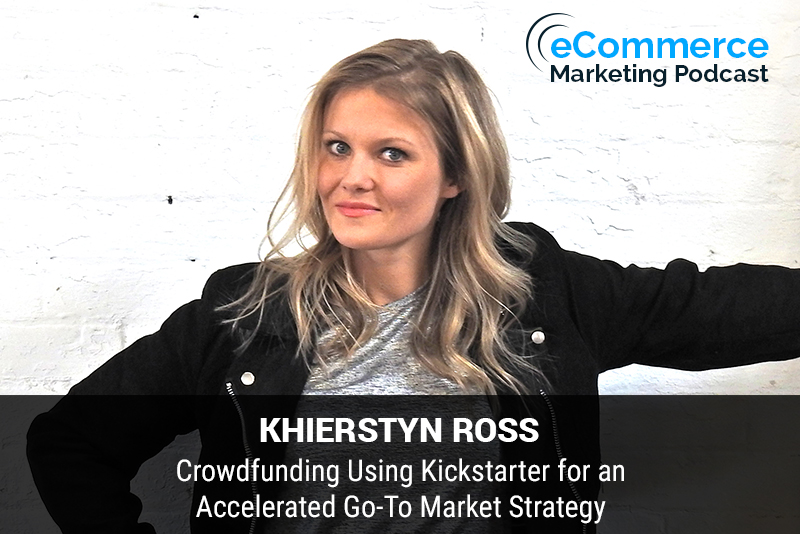
The eCommerce Marketing Podcast walks you through everything that goes into ecommerce marketing — from inbound marketing to paid advertising to conversions. Learn the strategies top marketing experts use to grow their businesses.
Marketing Strategies Revealed in this Episode:
- What Kickstarter is and how exactly it works
- The criteria that a business must meet in order to launch a kickstarter campaign
- Who Kickstarter is for
- The main reasons that a business should consider launching a kickstarter campaign and what they have to benefit from launching one
- Examples of companies that we may all be familiar with that have launched successful Kickstarter campaigns that have then gone on to do very well

Episode Title: Mastering Kickstarter Campaigns with Khierstyn Ross
Host: Arlen Robinson
Guest: Khierstyn Ross, Founder and Director of the Product Launchpad
In this episode of the eCommerce Marketing Podcast, Arlen Robinson interviews Khierstyn Ross, a product launch expert specializing in Kickstarter and Shopify launches for physical products. Khierstyn shares her journey from a failed product launch to becoming a successful Kickstarter strategist, raising millions for her clients. The discussion covers the essentials of launching a successful Kickstarter campaign, common pitfalls, and the benefits of crowdfunding.
Key Takeaways:
- Introduction to Khierstyn Ross and Her Background (00:20)
- Overview of Khierstyn’s journey from a failed launch to raising millions on Kickstarter.
- What is Kickstarter and How It Works (04:50)
- Explanation of crowdfunding and how Kickstarter and Indiegogo work to raise funds through pre-orders.
- Criteria for Successful Kickstarter Campaigns (09:15)
- Key factors: consumer-focused products, validated market need, and having a prototype ready.
- Uses of Kickstarter Beyond Initial Product Launch (12:45)
- Established brands using Kickstarter for marketing and reaching new audiences.
- Benefits of Launching on Kickstarter (16:10)
- Inventory funding, global exposure, SEO benefits, PR opportunities, and potential for organic traffic from the platform.
- Examples of Successful Kickstarter Campaigns (21:30)
- Notable campaigns: Oculus Rift, Purple, Exploding Kittens, and more.
- Building an Audience Before Launch (24:45)
- Importance of pre-launch audience building through platforms like Instagram.
- Khierstyn’s Personal Experience with Endurance Training (29:00)
- Insight into Khierstyn’s training for Ironman triathlons and how it complements her entrepreneurial journey.
Guest Information: Khierstyn Ross is the Founder and Director of the Product Launchpad, specializing in Kickstarter and Shopify launches for physical products.
Contact Khierstyn Ross:
- Website: Khierstyn.com
- Book a Call: Khierstyn.com/contact











